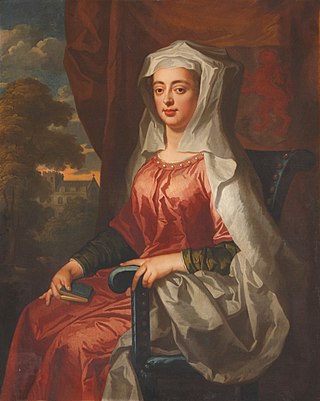Andrew Moray, also known as Andrew de Moray, Andrew of Moray, or Andrew Murray, was a Scottish esquire. He first rose to prominence during the First Scottish War of Independence, initially raising a small band of supporters at Avoch Castle in early summer 1297 to fight King Edward I of England. He soon had successfully regained control of the north for the absent Scots king, John Balliol. Moray subsequently merged his army with that of William Wallace, and jointly led the combined army to victory at the Battle of Stirling Bridge on 11 September 1297. He was severely wounded in that battle, dying at an unknown date and place that year.

Bothwell Castle is a large medieval castle, sited on a high, steep bank, above a bend in the River Clyde in South Lanarkshire, Scotland. It is located between Bothwell and Uddingston, about 10 miles (16 km) south-east of Glasgow. Construction of the castle was begun in the 13th century by the ancestors of Clan Murray, to guard a strategic crossing point of the Clyde. Bothwell played a key role in Scotland's Wars of Independence, changing hands several times.

Dervorguilla of Galloway was a "lady of substance" in 13th century Scotland, the wife from 1223 of John de Balliol and mother of John I, a future king of Scotland.

Clan Murray is a Highland Scottish clan. The chief of the Clan Murray holds the title of Duke of Atholl. Their ancestors were the Morays of Bothwell who established the family in Scotland in the 12th century. In the 16th century, descendants of the Morays of Bothwell, the Murrays of Tullibardine, secured the chiefship of the clan and were created Earls of Tullibardine in 1606. The first Earl of Tullibardine married the heiress to the Stewart earldom of Atholl and Atholl therefore became a Murray earldom in 1626. The Murray Earl of Atholl was created Marquess of Atholl in 1676 and in 1703 it became a dukedom. The marquess of Tullibardine title has continued as a subsidiary title, being bestowed on elder sons of the chief until they succeed him as Duke of Atholl.

Archibald Douglas, Earl of Douglas and Wigtown, Lord of Galloway, Douglas and Bothwell, called Archibald the Grim or Black Archibald, was a late medieval Scottish nobleman. Archibald was the illegitimate son of Sir James "the Black" Douglas, Robert the Bruce's trusted lieutenant, and an unknown mother. A first cousin of William Douglas, 1st Earl of Douglas, he inherited the earldom of Douglas and its entailed estates as the third earl following the death without legitimate issue of James, 2nd Earl of Douglas at the Battle of Otterburn.

William Comyn was Lord of Badenoch and Earl of Buchan. He was one of the seven children of Richard Comyn, Justiciar of Lothian, and Hextilda of Tynedale. He was born in Scotland, in Altyre, Moray in 1163 and died in Buchan in 1233 where he is buried in Deer Abbey.
The Justiciar of Lothian was an important legal office in the High Medieval Kingdom of Scotland.
John Comyn (Cumyn) was Lord of Badenoch in Scotland. He was Justiciar of Galloway in 1258. He held lands in Nithsdale and Tynedale.

Sir Robert de Lawedre (Lauder), Knt., of Quarrelwood, Edrington, and the Bass was Justiciar of Scotia, a Scottish soldier of great prominence and Captain of Urquhart Castle. He is recorded by Fordun, in his Scotichronicon, and in Extracta ex variis Cronicis Scocie as "Robertus de Lavedir 'the good'"
Sir Andrew Murray (1298–1338), also known as Sir Andrew Moray, or Sir Andrew de Moray, was a Scottish military and political leader who supported King David II of Scotland against Edward Balliol and King Edward III of England during the Second War of Scottish Independence. He held the lordships of Avoch and Petty in north Scotland, and Bothwell in west-central Scotland. In 1326 he married Christina Bruce, a sister of King Robert I of Scotland. Murray was twice chosen as Guardian of Scotland, first in 1332, and again from 1335 on his return to Scotland after his release from captivity in England. He held the guardianship until his death in 1338.
Sir Andrew Moray, Lord of Petty was Justiciar of Scotia.
Sir David Olifard was the first recorded Justiciar, governing the southern half of Scotland south of the rivers Forth and Clyde. Olifard was godson to King David I of Scotland, whose life he saved at the Rout of Winchester in 1141. Olifard is the first known chief of Clan Oliphant today.
Sir Geoffrey de Mowbray, Justiciar of Lothian, Baron of Dalmeny, Lord of Barnbougle and Inverkeithing was a 13th-14th century Scottish noble.
Sir Walter de Olifard, Lord of Bothwell and Abernethy and Justiciar of Lothian, was a Scottish noble.
Walter de Lindsay, Lord of Lamberton and Molesworth, Fordington and Ulceby, Justiciar of Lothian, Sheriff of Berwick was a Scottish noble, who held lands in Scotland and England.

William, son of Freskin, Lord of Duffus and Strathbrock, was a Scoto-Flemish noble.
William de Moravia, Lord of Petty, Bracholy, Boharm and Arteldol, was a Scottish noble.
Walter de Moravia, Lord of Duffus, and Strathbrock, was a Scottish noble.
William de Moray, Pantler of Scotland, Lord of Bothwell, Walston and Smailholm, was a Scottish noble.
Events from the 1270s in the Kingdom of Scotland.






